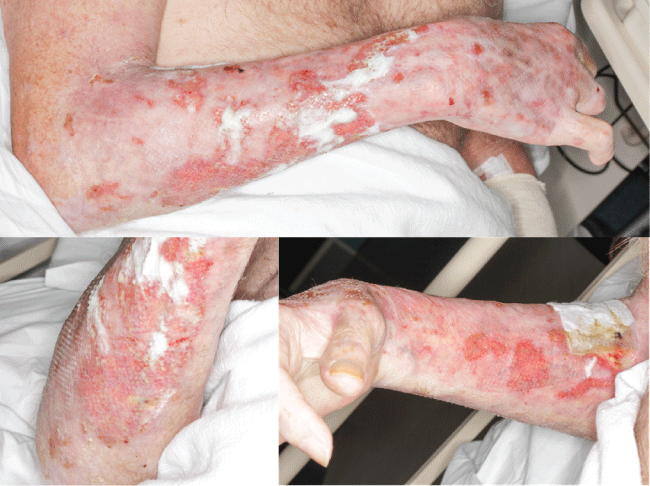What is Erosive pustulosis and how to treat them ?
Erosive Pustulosis :
Erosive pustulosis presents with localised areas of pustules , lakes of pus, or crusts , which overlie eroded plaques or nodules and mainly affects the sun damaged , bald scalp of older individuals . Erosive pustulosis of the scalp is a rare , inflammatory scalp condition characterized by skin atrophy , erosion and thick crust that results in perment hair loss . Although some patients respond well to topical corticosteroids or topical tacrolimus , a chronic waxing and waning course is not ususual .
Erosive pustular dermatosis of the scalp { EPDS } is an uncommon , pustular , idiopathic disorder typically occuring on the scalp of the elderly, whose diagnosis requires close clinicopathologic correlations . The vertex was the most common location one patients also had leg involvement . the clinicopathological similarities betwwen EPDS and PPG suggest that EPDS should be included in the spectrum of autoinflammatory dermatoses. Clinicial could consider the possibility of asssociated orders rather than managing EPDS as a sui generis skin disorder .
Causes of erosive pustulosis of the scalp :
The causes of erosive pustular dermatosis of the scalp is unknown . However , it appears to relate to sun damage . it is often triggered by a minor injury to the affected skin , and faulty wound healing may be involved . infection is not thought to be the primary cause, as the lesions do not clear with antibiotics alone .
What are the complications in erosive pustular dermatosis ?
The main complications of erosive pustular dermatosis are :
1. localised hair loss , which may be temporary or permanent
2. secondary bacterial infection
3. skin cancer
Erosive pustular dermatosis diagnosed :
Erosive pustular dermatosis is diagnosed by its characteristics clinical appearance. Culture of bacterial swabs may reveal staphylococcus aureus . Scraping may be undertaken for mycology , to rule out tinea capitis and kerion .
The underlying eroded skin frequently undergoes biopsy, as it is often difficult to determine clinically whether there is an underlying skin cancer. multiple and deep biopsies may be useful . Histopathology shows subcorneal and non- follicular pustules , epidermal hypertrophy , or atrophy and erosion . There is a mixed dermal inflammatory infiltrate . which includes plasma cells and neutrophils.
How to treat erosive dermatosis diagnosed?
The crusting should be removed by gentle soaking , perhaps using potassium permanganate or acetic acid solution as antiseptic astringent . A bland wound dressing is then applied . Erosive pustular dermatosis of the scalp improves with potent or ultrapotent topical steriods applied once or twice daily to the affected areas for a couple of week, then repeated as necessary and when the skin disorders recurs . if long term topical steroid is required a calcineurin inhibitor such as tacrolimus ointment may be more suitable .
Other treatments that are reported to be helpful include :
- anti - inflammatory antibiotics for 6 weeks or more
- calcipotriol cream to reduce scaling
- cryotherapy of underlying actintic keratoses
- Topical dapsone
- Zincsulfate
- photodynamic therapy
- oral retinoids , acetretin and isotretinoin
Signs and Symptoms :
EDP usually present as amixture of raw areas and pus spots covered in yellow crusty plaques. Affected areas of the scalp heal with permanent hair loss and scarring . on the leg , scarring and skim thinning is less of a problem than on th escalp . on the leg ther is often swelling and swollen blue veins. some people notice pain and itching , but this is not common .
Erosive pustular dermatosis be cured :-
There are many treatments have been used for EPD . Unfortunately , no definitive cure has been found , but often , it can be managed effectively . Treatment is aimed at removing the crusts and preventing their recurrence. By doing this, the raw areas underneath are allowed to dry and the areas may gradually heal . Scarring , if it develops is permanent .




Comments
Post a Comment